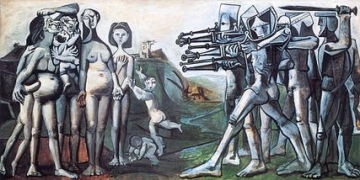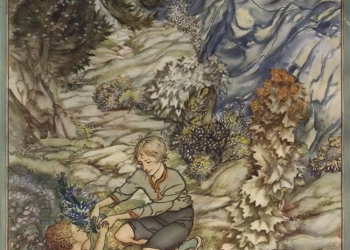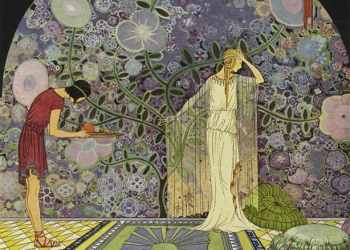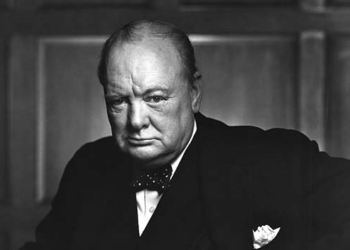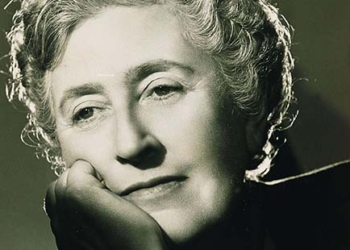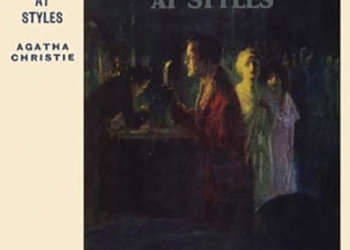Caspar David Friedrich - Abend (also known as Sonnenuntergang Hinter der Dresdener Hofkirche) (1824) (paintings, art)
Caspar David Friedrich - Adolf Gottlieb Friedrich, Reading (1802) Kunsthalle, Mannheim (paintings, art)
Caspar David Friedrich - Allegory of Profane Music (paintings, art)
Caspar David Friedrich - Anges en adoration (1826) 18,5x26,7 Hambourg, Kunsthalle (paintings, art)
Caspar David Friedrich - Arkana dessin crayon et sepia (1806) 60,9x100cm (paintings, art)
Caspar David Friedrich - At the stadtmauer (paintings, art)
Caspar David Friedrich - Ausblick ins Elbtal (1807) (paintings, art)
Caspar David Friedrich - Ausschnitt Eisberg (paintings, art)
Caspar David Friedrich - Autoportrait (1810) dessin craie 23x18,2cm Berlin, Kupferstichkabinett (paintings, art)
Caspar David Friedrich - Autoportrait au bras leve crayon et encre (1802) 26,7x21,5cm Hambourg, Kunsthalle (paintings, art)
Caspar David Friedrich - Autoportrait de profil dessin encre de Chine (1802) 13,1x9,2cm Hambourg, Kunsthalle (paintings, art)
Caspar David Friedrich - Autumn (paintings, art)
Caspar David Friedrich - Bateau sur l'Elbe, le matin dans le brouillard (1825) Huile sur toile 22,5x30,8 (paintings, art)
Caspar David Friedrich - Baume und Straucher im Schnee (1828) (paintings, art)
Caspar David Friedrich - Blocks of Ice (paintings, art)
Caspar David Friedrich - Boat on the Shore (Moonrise) (paintings, art)
Caspar David Friedrich - Boats in the Harbour at Evening (1828) Gemaldegalerie, Dresden (paintings, art)
Caspar David Friedrich - Boats in the Harbour at Evening (1828) (paintings, art)
Caspar David Friedrich - Bohemian Landscape with Mount Milleschauer (1808) Gemaldegalerie, Dresden (paintings, art)
Caspar David Friedrich - Bohmische Landschaft Gebirgslandschaft, Die zwei Baume (1810) 70x104,5cm (paintings, art)
Caspar David Friedrich - Branche de tilleul dessin crayon, lavis (1812) 12,8x18cm osna (paintings, art)
Caspar David Friedrich - Cercueil au tombeau crayon et sepia (1836) 39,2x39,4cm Moscou, musee Pouchkine (paintings, art)
Caspar David Friedrich - Chalk Cliffs on Rugen (1818) Stiftung Oskar Reinhart, Winterthur (paintings, art)
Caspar David Friedrich - Chene avec nid de cigognes dessin crayon (1806) 28,6x20,5cm Hambourg, Kunsthalle (paintings, art)
Caspar David Friedrich - Chene denude dessin crayon (1809) 36x25,9cm (paintings, art)
Caspar David Friedrich - Chouette sur une tombe sepia (1837) 25,9x22,2cm Moscou, musee Pouchkine (paintings, art)
Caspar David Friedrich - Clair de lune sur la mer crayon et sepia (1839) 25,6x38,5cm Hambourg, Kunsthalle (paintings, art)
Caspar David Friedrich - Cloister Cemetery in the Snow (1817-19) [Destroyed in Berlin 1945] (paintings, art)
Caspar David Friedrich - Coastal Landscape (paintings, art)
Caspar David Friedrich - Croix dans la Foret Huile sur toile (1820) 42x32cm (paintings, art)
Caspar David Friedrich - Croix sur la montagne (1817) plume et aquarelle 27,2x20,8cm (paintings, art)
Caspar David Friedrich - Cross in the Mountains (1805-06) Staatliche Museen, Berlin (paintings, art)
Caspar David Friedrich - Cross in the Mountains (Tetschen Altar) (1808) Gemaldegalerie, Dresden (paintings, art)
Caspar David Friedrich - Cross in the Mountains (Tetschen Altar) (1808) (paintings, art)
Caspar David Friedrich - Der Chasseur im Walde (1814) 65,7x46,7cm Collection Particuliere (paintings, art)
Caspar David Friedrich - Der Heldstein bei Rathen an der Elbe (1828) (paintings, art)
Caspar David Friedrich - Der Mittag (1822) (paintings, art)
Caspar David Friedrich - Der Nachmittag (paintings, art)
Caspar David Friedrich - Deux Hommes contemplant la Lune Huile sur toile (1820) 35x44cm Dresde, Gemaldegalerie Neue Meister (paintings, art)
Caspar David Friedrich - Deux hommes au lever de la Lune crayon et sepia (1837) 24,5x34,5cm (paintings, art)
Caspar David Friedrich - Deux hommes en bord de mer au crepuscule Huile sur toile 51x66 (1817)cm Berlin, Nationalgalerie (paintings, art)
Caspar David Friedrich - Die Ruine des Klosters Eldena (1824) (paintings, art)
Caspar David Friedrich - Dolmen in the Fall (Hunengrab im Herbst) (1820) (paintings, art)
Caspar David Friedrich - Drifting Clouds (1820) Kunsthalle, Hamburg (paintings, art)
Caspar David Friedrich - Drifting Clouds (1820) v2 Kunsthalle, Hamburg (paintings, art)
Caspar David Friedrich - Dune en bord de mer crayon et aquarelle (1824) 24,7x36,5cm Berlin, Kupferstichkabinett (paintings, art)
Caspar David Friedrich - Easter Morning (1833) Museo Thyssen-Bornemisza, Madrid (paintings, art)
Caspar David Friedrich - Eboulements de pierres aquarelle sur crayon (1813) 21x17,4cm Berlin, Kupferstichkabinett (paintings, art)
Caspar David Friedrich - Elblandschaft (Flachlandschaft, Abendlandschaft im Riesengebirge) (1823) (paintings, art)
Caspar David Friedrich - Evening Landscape with Two Men (1830-35) The Hermitage, St Petersburg (paintings, art)
Caspar David Friedrich - Felspartie (Felspartie im Harz) (1811) (paintings, art)
Caspar David Friedrich - Fir Trees in the Snow (1828) Munich, Neue Pinakothek (paintings, art)
Caspar David Friedrich - Flat country shank at Greifswalder Bodden (paintings, art)
Caspar David Friedrich - Fog in the Elbe Valley (1821) Nationalgalerie, Berlin (paintings, art)
Caspar David Friedrich - Frau am Meer auf Rugen (1818) (paintings, art)
Caspar David Friedrich - Friedrich in his studio (1819) (paintings, art)
Caspar David Friedrich - Fruhschnee (Tannen im Schnee, Fichtenwald im Winter) (1828) 43,8x34,5cm Hambourg, Kunsthalle (paintings, art)
Caspar David Friedrich - Gartenterrasse (Schlossterrasse, Blick von der Terrasse des Schlosses Erdmannsdorf) (1812) HD (paintings, art)
Caspar David Friedrich - Gebirgslandschaft mit Regenbogen (1810) (paintings, art)
Caspar David Friedrich - Georg Friedrich Kersting l'Atelier de Friedrich (1811) Huile sur toile 54x42cm Hambourg, Kunsthalle (paintings, art)
Caspar David Friedrich - Gerhard von Kugelgen - Portrat des Malers Caspar David Friedrich (1810-20) (paintings, art)
Caspar David Friedrich - Grabmale alter Helden (Old Heroes' Graves) (Graber gefallenere Freiheitskrieger, Grab des Arminius) (1812) (paintings, art)
Caspar David Friedrich - Graveyard under Snow (1826) Museum der bildenden Kunst, Leipzig (paintings, art)
Caspar David Friedrich - Greifswald im Mondschein (1816-17) HQ (paintings, art)
Caspar David Friedrich - Greifwald Harbour (1818-20) Nationalgalerie, Berlin v2 (paintings, art)
Caspar David Friedrich - Hill and Ploughed Field near Dresden (1825) 22,2x30,5cm Hambourg, Kunsthalle (paintings, art)
Caspar David Friedrich - Jeune fille avec chandelier (1825) Huile sur toile 71x49cm Collection Particuliere (paintings, art)
Caspar David Friedrich - Kugelgens Grab (1821-22) (paintings, art)
Caspar David Friedrich - L'Apres-Midi Huile sur toile (1822) 22x31cm (paintings, art)
Caspar David Friedrich - L'Entree du cimetiere Huile sur toile 143x110cm (1826) Dresde, Gemaldegalerie Neue Meister (paintings, art)
Caspar David Friedrich - L'Hiver sepia (1826) 19,2x17,5cm Hambourg, Kunsthalle (paintings, art)
Caspar David Friedrich - L'ete sepia (1826) 19x27,1cm Hambourg, Kunsthalle (paintings, art)
Caspar David Friedrich - L'etoile du soir Huile sur toile (1835) 32,5x45cm (paintings, art)
Caspar David Friedrich - La Cascade crayon et aquarelle (1830) 25x34cm Collection Particuliere (paintings, art)
Caspar David Friedrich - La Cathedrale Huile sur toile (1818) 152,5x70,5cm Collection Georg Schafer (paintings, art)
Caspar David Friedrich - La Place du marche a Greifswald Plume et aquarelle (1818) 54x76cm Greifswald, Pommersches Landesmuseum (paintings, art)
Caspar David Friedrich - La Ruine d'Eldena dans le riesengebirge Huile sur toile (1835) 72x101cm Greifswald, Pommersches Landesmuseum (paintings, art)
Caspar David Friedrich - La Tonnelle Huile sur toile (1818) 30x22cm Munich, Neue Pinakothek (paintings, art)
Caspar David Friedrich - La fenetre de l'atelier (droit) crayon et sepia 31,2x23,7cm (1806) Vienne, osterreichische Galerie im Belvedere (paintings, art)
Caspar David Friedrich - La fenetre de l'atelier (gauche) crayon et sepia 31,4x23,5cm (1806) Vienne, osterreichische Galerie im Belvedere (paintings, art)
Caspar David Friedrich - Landscape in the Riesengebirge (paintings, art)
Caspar David Friedrich - Landscape with Oak Trees and a Hunter (paintings, art)
Caspar David Friedrich - Landscape with Temple in Ruin (1797) (paintings, art)
Caspar David Friedrich - Landschaft mit Regenbogen (1810) 59x84,5cm (paintings, art)
Caspar David Friedrich - Le Midi Huile sur toile (1822) 20x30cm (paintings, art)
Caspar David Friedrich - Le Pecheur sur la plage Huile sur toile 33,5x50,8cm (1807) Vienne, osterreichische Galerie im Belvedere (paintings, art)
Caspar David Friedrich - Le Printemps sepia (1826) 19,1x27,3cm Hambourg, Kunsthalle (paintings, art)
Caspar David Friedrich - Le Riesengebirge au clair de lune Huile sur toile (1810) 47,5x167cm wsk (paintings, art)
Caspar David Friedrich - Le Soir Huile sur carton (1824) 12,5x21,2cm Vienne, osterreichische Galerie im Belvedere (paintings, art)
Caspar David Friedrich - Le Soir Huile sur carton (1824) 20x27,5cm Mannheim, Kunsthalie (paintings, art)
Caspar David Friedrich - Le Soir Huile sur toile (1821) 22,3x31 (paintings, art)
Caspar David Friedrich - Le Tombeau d'Ulrich von Hutten (1824) Huile sur toile 93x73cm (paintings, art)
Caspar David Friedrich - Le cimetiere de Priesnitz, pres de Dresde Huile sur toile (1828) 31x25,5 Berlin, Kupferstichkabinett (paintings, art)
Caspar David Friedrich - Le soir sur la Baltique Huile sur toile 54x71,5cm (1831) Dresde, Gemaldegalerie Neue Meister (paintings, art)
Caspar David Friedrich - Les Recifs Huile sur toile (1824) 22x31cm (paintings, art)
Caspar David Friedrich - Man and Woman Contemplating the Moon (1830-35) Nationalgalerie, Berlin (paintings, art)
Caspar David Friedrich - Meadows near Greifswald (1820-22) Kunsthalle, Hamburg detail (paintings, art)
Caspar David Friedrich - Meadows near Greifswald (1820-22) Kunsthalle, Hamburg (paintings, art)
Caspar David Friedrich - Mer au lever du soleil sepia (1826) 18,7x26,5cm Hambourg, Kunsthalle (paintings, art)
Caspar David Friedrich - Monastery Graveyard in the Snow (1817-19) [Destroyed in Berlin 1945] (paintings, art)
Caspar David Friedrich - Monk by the Sea (1809) Nationalgalerie, Berlin (paintings, art)
Caspar David Friedrich - Moonrise Two Men on the Shore (paintings, art)
Caspar David Friedrich - Moonrise by the Sea (detail) (paintings, art)
Caspar David Friedrich - Moonrise by the Sea v 1 (1822) Nationalgalerie, Berlin (paintings, art)
Caspar David Friedrich - Moonrise by the Sea v 2 (1822) Nationalgalerie, Berlin (paintings, art)
Caspar David Friedrich - Moonrise over the Sea (1821) The Hermitage, St Petersburg (paintings, art)
Caspar David Friedrich - Morgen (Ausfahrt der Boote) (1816-18) (paintings, art)
Caspar David Friedrich - Morgennebel im Gebirge (1808) (paintings, art)
Caspar David Friedrich - Morning in the Mountains (1822-23) The Hermitage, St Petersburg (paintings, art)
Caspar David Friedrich - Morning in the Riesengebirge (1810-11) Nationalgalerie, Berlin (paintings, art)
Caspar David Friedrich - Mother Heiden (1798-1802) Pommersches Landesmuseum, Greifswald (paintings, art)
Caspar David Friedrich - Mountain Landscape (paintings, art)
Caspar David Friedrich - Mountain Peak with Drifting Clouds (1822) 44x37cm Berlin, Nationalgalerie (paintings, art)
Caspar David Friedrich - Mountainous River Landscape (Day Version) (1830-35) Staatliche Museen, Kassel (paintings, art)
Caspar David Friedrich - Navires a l'ancre Huile sur toile (1815) 21x30cm Collection Particuliere (paintings, art)
Caspar David Friedrich - Nebel (1807) (paintings, art)
Caspar David Friedrich - Nebelschwaden (1818-20) (paintings, art)
Caspar David Friedrich - Neubrandenburg (1817) Pommersches Landesmuseum, Greifswald (paintings, art)
Caspar David Friedrich - Neubrandenburg in Flames (Sunrise near Neubrandenburg) (1835) Kunsthalle, Hamburg (paintings, art)
Caspar David Friedrich - Oak in the Snow (1820) Wallraf-Richartz Museum, Cologne (paintings, art)
Caspar David Friedrich - Oil Painting by Carl Gustav Carus (1832) (paintings, art)
Caspar David Friedrich - On a Sailing Ship (1819) Detail (paintings, art)
Caspar David Friedrich - On a Sailing Ship (1819) The Hermitage, St Petersburg (paintings, art)
Caspar David Friedrich - Owl Flying against a Moonlit Sky (paintings, art)
Caspar David Friedrich - Owl in a Gothic Window (paintings, art)
Caspar David Friedrich - Paysage avec mur eboule dessin crayon, encre de Chine et aquarelle (1840) 12,2x18,5cm Hambourg, Kunsthalle (paintings, art)
Caspar David Friedrich - Paysage avec pavillon encre et aquarelle (1797) 16,5x22cm Hambourg, Kunsthalle (paintings, art)
Caspar David Friedrich - Paysage avec tombe, cercueil et chouette dessin crayon et sepia (1837) 48,5x38,5cm Hambourg, Kunsthalle (paintings, art)
Caspar David Friedrich - Paysage cotier (1830) sepia 40x58cm Berlin, Kupferstichkabinettu (paintings, art)
Caspar David Friedrich - Paysage d'ete au chene mort dessin crayon et sepia (1805) 40,5x62cm (paintings, art)
Caspar David Friedrich - Paysage de montagne dans la brume Huile sur toile (1808) 71x104cm Rudolstadt, Staatliches Museum Schloss Heideckburg (paintings, art)
Caspar David Friedrich - Paysage du Riesengebirge Huile sur toile (1811) 45x58, 3cm Moscou, musee Pouchkine (paintings, art)
Caspar David Friedrich - Paysage fluvial en montagne, verso aquarelle et tempera sur papier (1835) 74x124cm cqmng Staatliche Museen, Kassel (paintings, art)
Caspar David Friedrich - Pelerinage au soleil couchant dessin crayon et sepia (1805) 40,5x62cm (paintings, art)
Caspar David Friedrich - Picture in Remembrance of Johann Emanuel Bermer (1817) 43,5x57cm (paintings, art)
Caspar David Friedrich - Port by Moonlight (1811) (paintings, art)
Caspar David Friedrich - Portail de l'ecole des princes de Meissen dessin crayon et sepia (1836) 22,8x19,3cm Collection Particuliere (paintings, art)
Caspar David Friedrich - Portrait rupestre sur le domaine d'Uttewald dessin sepia (1801) 70,5x50,3cm (paintings, art)
Caspar David Friedrich - Projet d'autel crayon, plume et aquarelle (1817) 54,8x43,7cm (paintings, art)
Caspar David Friedrich - Projet de decoration pour l'eglise Sainte Marie de strlsund crayon plume et aquarelle (1817) 56,6x43,7cm ngn (paintings, art)
Caspar David Friedrich - Prototype (paintings, art)
Caspar David Friedrich - RIP (paintings, art)
Caspar David Friedrich - Riesengebirge (Memories of the Riesengebirge) (paintings, art)
Caspar David Friedrich - Riesengebirge Landscape with Rising Fog (1819-20) Neue Pinakothek, Munich (paintings, art)
Caspar David Friedrich - Riesengebirgslandschaft (Gebirgslandschaft aus Bohmen) (1835) (paintings, art)
Caspar David Friedrich - Riesengebirgslandschaft (Harzlandschaft, Gebirgslandschaft) (1823) 35x48,8cm Hambourg, Kunsthalle (paintings, art)
Caspar David Friedrich - Rochers et arbres dessin crayon et aquarelle (1810) 36x26cm Hambourg, Kunsthalle (paintings, art)
Caspar David Friedrich - Rocky Landscape with two harpists, etching (1833) (paintings, art)
Caspar David Friedrich - Rocky Ravine (1822-23) Kunsthistorisches Museum, Vienna (paintings, art)
Caspar David Friedrich - Ruine Oybin bei Mondschein (1812-32) (paintings, art)
Caspar David Friedrich - Ruins of the Monastery Eldena near Greifswald 1824-1825 Oil on canvas, 35 x 49cm (paintings, art)
Caspar David Friedrich - Ruins of the Monastery Eldena near Greifswald 1824-1825 Oil on canvas, 35 x 49cm (paintings, art)
Caspar David Friedrich - Schwane im Schilf (Zwei Schwane auf dem Weiher im Mondschein) (1819-20) HD (paintings, art)
Caspar David Friedrich - Schwane im Schilf beim ersten Morgenrot (1832) 2 (paintings, art)
Caspar David Friedrich - Seashore by Moonlight (1835) (paintings, art)
Caspar David Friedrich - Seashore with Shipwreck by Moonlight (1825-30) Nationalgalerie, Berlin v2 (paintings, art)
Caspar David Friedrich - Segelschiff (1815) v2 (paintings, art)
Caspar David Friedrich - Self-Portrait (1800) Statens Museum for Kunst, Copenhagen (paintings, art)
Caspar David Friedrich - Self-Portrait (paintings, art)
Caspar David Friedrich - Spaziergang in der Abenddammerung (1837-40) (paintings, art)
Caspar David Friedrich - Spring (paintings, art)
Caspar David Friedrich - Squelettes dans la grotte aux stalactites sepia (1826) 18,8x27,5cm Hambourg, Kunsthalle (paintings, art)
Caspar David Friedrich - Stadt bei Mondaufgang (Stadt am Wasser bei untergehender Sonne) (1817) (paintings, art)
Caspar David Friedrich - Statue of the Madonna in the Mountains, 1804 (paintings, art)
Caspar David Friedrich - Sturzacker (paintings, art)
Caspar David Friedrich - Summer (paintings, art)
Caspar David Friedrich - The Abbey in the Oakwood (1809) 110,4x171, Schloss Charlottenburg, Berlin (paintings, art)
Caspar David Friedrich - The Chalk Cliffs on Rgen (paintings, art)
Caspar David Friedrich - The Cross Beside The Baltic (1815) (paintings, art)
Caspar David Friedrich - The Cross in front of a Rainbow in the Mountains (paintings, art)
Caspar David Friedrich - The Cross in the Mountains (1812) (paintings, art)
Caspar David Friedrich - The Difference between the true religion of Christ and the false idolatrous teac (paintings, art)
Caspar David Friedrich - The Dreamer (paintings, art)
Caspar David Friedrich - The Grosse Gehege near Dresden (1832) Gemaldegalerie, Dresden (paintings, art)
Caspar David Friedrich - The Morning (1820-21) (paintings, art)
Caspar David Friedrich - The Musucian's Dream (paintings, art)
Caspar David Friedrich - The North Sea in Moonlight (1823) 22x30,5cm Prague, Narodni Galerie (paintings, art)
Caspar David Friedrich - The Oaktree in the Snow (1829) Nationalgalerie, Berlin (paintings, art)
Caspar David Friedrich - The Riesengebirge (1830-34) Nationalgalerie, Berlin (paintings, art)
Caspar David Friedrich - The Riesengebirge (1830-35) Nationalgalerie, Berlin (paintings, art)
Caspar David Friedrich - The Rock Gates in Neurathen (paintings, art)
Caspar David Friedrich - The Romantic Reader (paintings, art)
Caspar David Friedrich - The Ruins of Eldena (1825) (paintings, art)
Caspar David Friedrich - The Sisters on the Balcony (1820) (paintings, art)
Caspar David Friedrich - The Stages of Life (beach picture, beach scene in Wiek) (1833) (paintings, art)
Caspar David Friedrich - The Summer (Der Sommer (Landschaft mit Liebespaar)) (1807) Neue Pinakothek, Munich (paintings, art)
Caspar David Friedrich - The Temple of Juno in Agrigento (1828-30) (paintings, art)
Caspar David Friedrich - The Tree of Crows (1822) Louvre Museum (Paris, France) (paintings, art)
Caspar David Friedrich - The Wanderer above the Mists (1817-1818) Kunsthalle, Hamburg (2) (paintings, art)
Caspar David Friedrich - The Watzmann (1824-25) Nationalgalerie, Berlin (paintings, art)
Caspar David Friedrich - The Woman with the Cobweb (paintings, art)
Caspar David Friedrich - The Woman with the Raven at the Abyss (paintings, art)
Caspar David Friedrich - The Wreck of Hope, The Sea of Ice (Polar Sea), (1823-24) Kunsthalle, Hamburg (Detail) (paintings, art)
Caspar David Friedrich - The Wreck of Hope, The Sea of Ice (Polar Sea), (1823-24) Kunsthalle, Hamburg (paintings, art)
Caspar David Friedrich - The cross at the mountain (paintings, art)
Caspar David Friedrich - Tombeau Hunnique au bord de la mer dessin crayon et sepia (1807) 64,5x95cm (paintings, art)
Caspar David Friedrich - Tombeau Hunnique sous la neige Huile sur toile (1807) 61,5x80cm Dresde, Gemaldegalerie Neue Meister (paintings, art)
Caspar David Friedrich - Trees in the moonlight (paintings, art)
Caspar David Friedrich - Verschneite Hutte (Hutte im Schnee) (1827) 31x25cm Berlin, Nationalgalerie (paintings, art)
Caspar David Friedrich - View of a Harbour (1815-16) (paintings, art)
Caspar David Friedrich - View of the Baltic (1820-25) Museum Kunst Palast, Duesseldorf (paintings, art)
Caspar David Friedrich - Village Landscape in Morning Light (The Lone Tree) (1822) Nationalgalerie, Berlin (paintings, art)
Caspar David Friedrich - Vision de l'Eglise chretienne Huile sur toile (1814) 66,5x51,5cm collection Georg Schafer (paintings, art)
Caspar David Friedrich - Voilier Dessin Crayon (1818) 33,1x24,7cm Berlin, Kupferstichkabinett (paintings, art)
Caspar David Friedrich - Vue d'Arkona au lever du soleil dessin crayon et sepia (1803) 65x98cm Hambourg, Kunsthalle (paintings, art)
Caspar David Friedrich - Wald im Spatherbst (Waldwasser, Herbstwald) (1835) (paintings, art)
Caspar David Friedrich - Waldinneres bei Mondschein (1823-30) (paintings, art)
Caspar David Friedrich - Westfassade der Ruine Eldena mit Backhaus und Scheune (1806) (paintings, art)
Caspar David Friedrich - Window Looking over the Park (paintings, art)
Caspar David Friedrich - Winter Landscape (1811) National Gallery, London (paintings, art)
Caspar David Friedrich - Winter Landscape (1812) Staatliches Museum, Schwerin (paintings, art)
Caspar David Friedrich - Winter (paintings, art)
Caspar David Friedrich - Winterlandschaft mit Kirchenruine (1807-08) (paintings, art)
Caspar David Friedrich - Woman at a Window (1822) Nationalgalerie, Berlin (paintings, art)
Caspar David Friedrich - Woman before the Rising Sun (Woman before the Setting Sun) (1818-20) Museum Folkwang, Essen (paintings, art)
Caspar David Friedrich - Woman in a Shawl (2) (paintings, art)
Caspar David Friedrich - Woman in a Shawl (paintings, art)
Caspar David Friedrich - Wreck in the Moonlight (1835) Nationalgalerie, Berlin (paintings, art)
Caspar David Friedrich - Wreck in the Sea of Ice (1798) Kunsthalle, Hamburg (paintings, art)
Caspar David Friedrich - Zwei Manner am Meer bei Mondaufgang (Zwei Manner am Meer bei Sonnenuntergang) (1817) (paintings, art)
Caspar David Friedrich - l'Automne sepia (1826) 19,1x27,5cm Hambourg, Kunsthalle (paintings, art)

